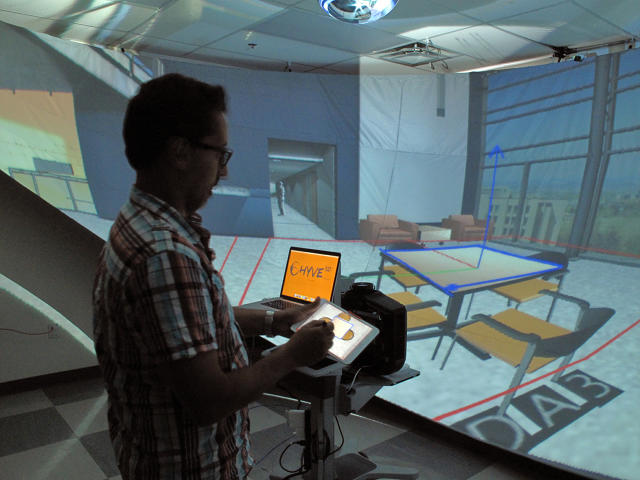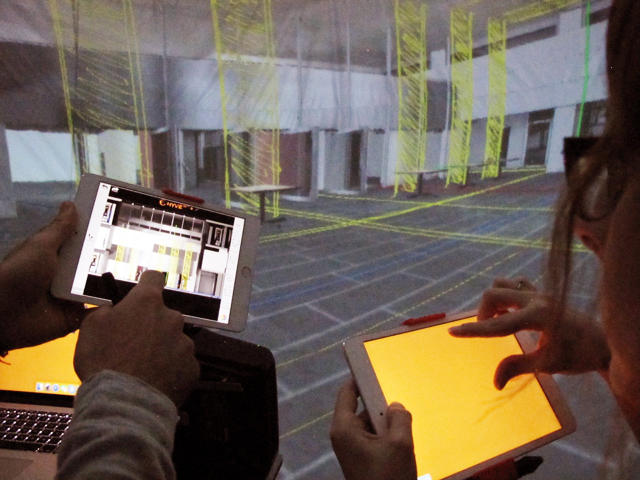The mouse cursor—that oft-pixelated, 2-D arrow that's constantly hovering over your computer screen—hasn't really changed much since it emerged from the labs of Xerox Parc. But the mouse cursor is getting long in the tooth. On mobile touch screens, it's already obsolete. And as for the virtual interfaces of tomorrow, well, how can a 2-D pointer control virtual 3-D worlds?
But Tomás Dorta, an associate professor of the University of Montreal, doesn't think the days of the mouse cursor are over quite yet. The man responsible for collaborative VR design tools such as Hyve3D, Dorta thinks that the mouse cursor of the future will be an avatar for the smartphone we hold in our hands.

At the 2015 SIGGRAPH conference in Los Angeles, Dorta unveiled a new approach to the mouse cursor that reimagines it for virtual worlds like Hyve3D. His approach uses a smartphone or tablet as a sort of 3-D mouse to a connected screen or headset, which shows a first-person view of a 3-D interface—whether Hyve3D, some Oculus Rift game, or even a 3-D operating system. It works by turning your mouse cursor into an invisible avatar in a 3-D world: imagine playing Doom without the gun. By using multitouch gestures on the device's screen in combination with its built-in accelerometers, you can control your cursor in three-dimensions, tapping on things and grabbing things that fall in your crosshairs, which opens up all sorts of interesting possibilities without specialized hardware.
It's probably more useful to talk about the 3-D cursor in terms of what it can do. Within Hyve3D, Dorta says that the 3-D cursor allows multiple designers or engineers to interact with a virtual space simultaneously, using their individual smartphones to grab objects, copy and paste them, rotate them, sketch in the air with them, and so on. This is a big step forward, because previously, Hyve3D required users to use specialized iPads with attached joysticks to navigate the program's VR design space; now, they just download an app.

But Dorta says that the possibilities for his 3-D cursor go beyond Hyve3D. For example, imagine his technology paired with something like an Oculus Rift. Instead of having to wear specialized gloves, stand in front of a Kinect, or interact with virtual reality through something like an Xbox 360 controller, his 3-D cursor can allow everyone to manipulate and maneuver through VR worlds with whatever smartphone they have in their pockets.
"What we've done is evolve the cursor into an avatar for a 3-D world," Dorta tells me by phone. "It's no longer just this little arrow, bouncing around on your desktop. Instead, it can now be a powerful tool for seeing inside and modifying virtual worlds." Right now, you send someone a file by attaching it to an email; in the future, using Dorta's 3-D cursor technology, you might literally throw it to someone across cyberspace using your smartphone as a pitcher's glove.
You can read more about the 3-D cursor at Hyve3D's official site. Dorta says that Hyve3D users will be able to try the 3-D cursor for themselves later this year by downloading an iOS app.